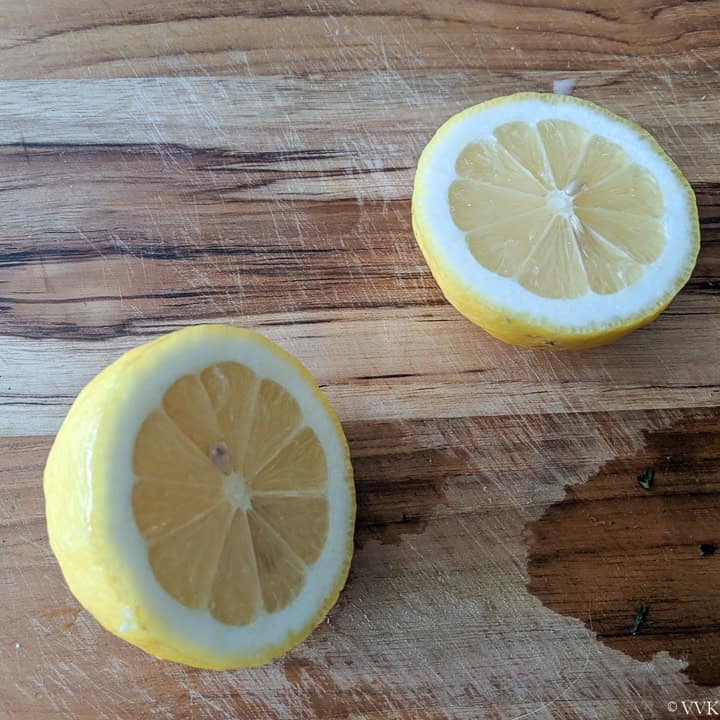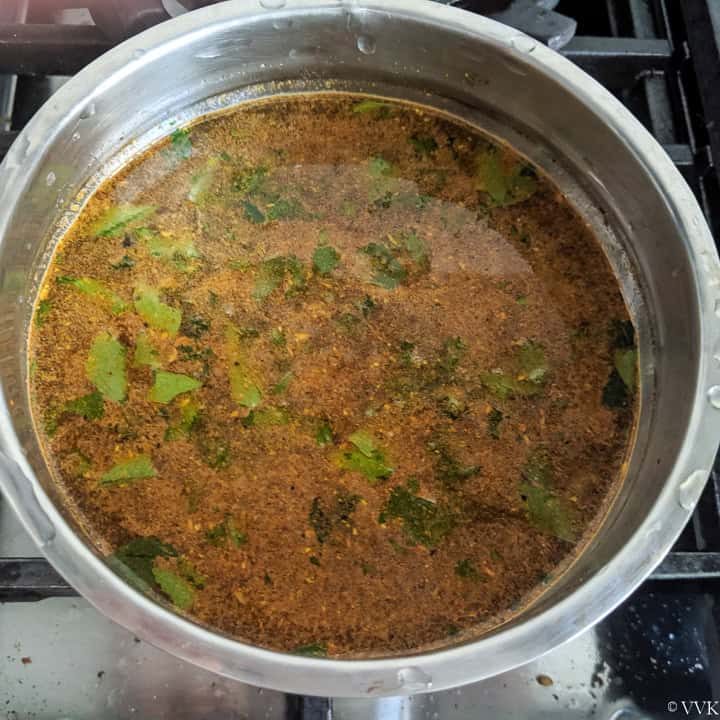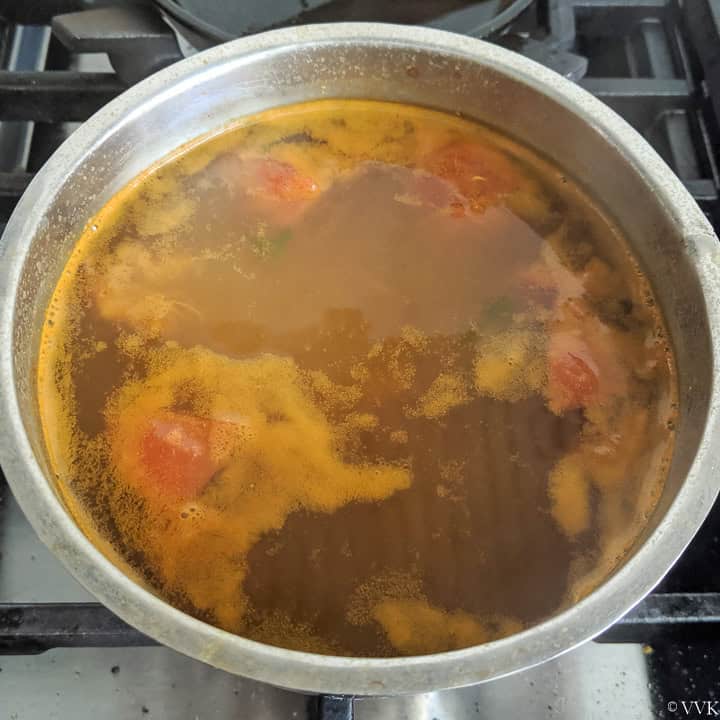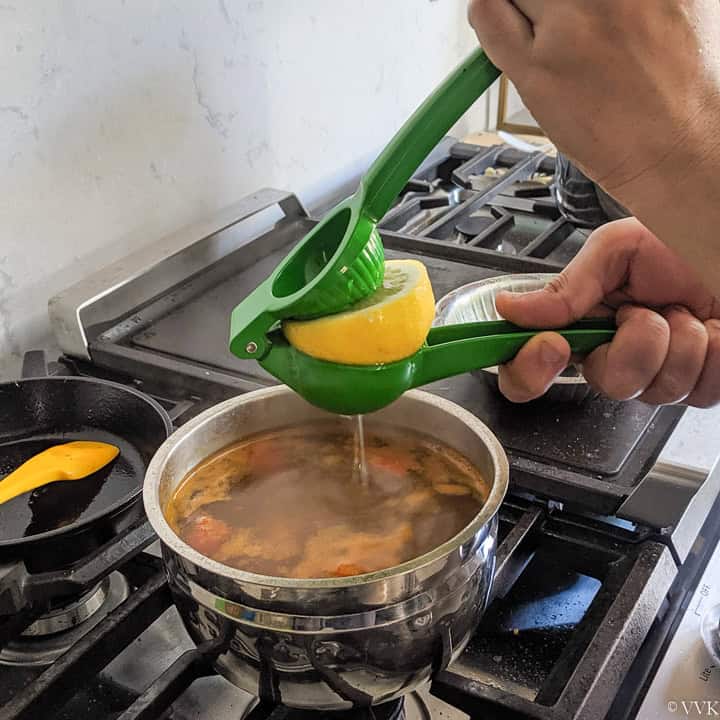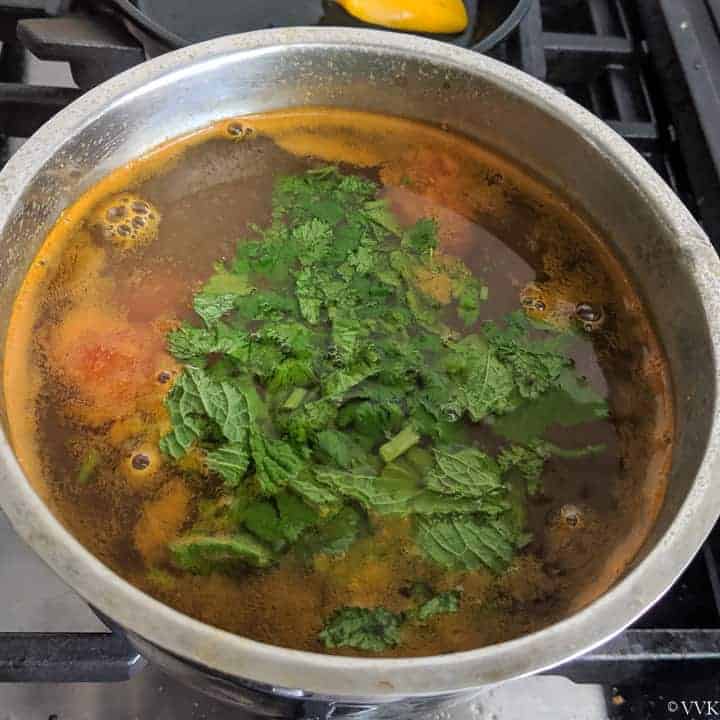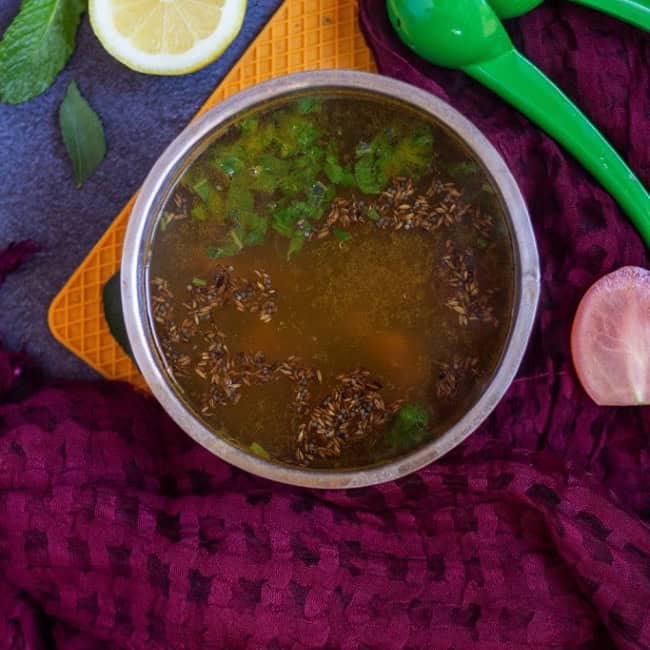Lemon rasam is one of the popular rasam varieties from Tamil cuisine. In Tamil, we call it as elumichai rasam and elumichai means lemon. We in our household make it more like dal rasam or paruppu rasam, but instead of tamarind, we add lemon juice for the tangy flavor. It is very similar to the Andhra style nimmakaya pappu charu, but of course, the rasam powder and the spices slightly vary. Jump to:How to serve lemon rasam-How much dal to use-When to add lemon juice & how much-Can I reheat lemon rasam-Herbs used-Other South Indian rasam recipes-South Indian style lemon rasam recipe with detailed step-wise pictures-Recipe Notes-📖 Recipe
How to serve lemon rasam-
This lemon rasam is very soothing and comforting. It’s a perfect home remedy for sore through and common cold and flu. You can serve this with steamed rice along with dry curry or serve it as a soup. I love it both ways, and this blog needs no introduction about my love for rasam. :-)
How much dal to use-
We use toor dal or the split pigeon peas for this rasam. And for this measure, you can use from 2 tbsp to 4 tbsp. If you want to include more protein, I would recommend 4 tbsp for sure. I went with 3 tbsp.
When to add lemon juice & how much-
We usually add lemon juice after the cooking is complete and after turning off the heat. Simmering the rasam after adding lemon juice is not recommended, as the lemon’s acidic nature ruins the rasam’s taste. Like I mentioned in paruppu rasam, never boil the rasam. Just simmer till it becomes frothy and turn off the heat.
I went with one medium-sized lemon. It all depends on the tanginess of the lemon. Start with half a lemon juice and, if required, add more.
Can I reheat lemon rasam-
Well, the answer is no or atleast do not heat in the stove-top. The lemon juice might make it bitter. You can microwave the required amount for 45 to 60 seconds but not more than that. If you use ghee for tempering, you might have to microwave it as ghee solidifies and forms a layer on top. Same with coconut oil. If you are planning to refrigerate it, add lemon juice just before serving and do the tempering before serving as well. I would recommend tempering with ghee, but if you want to keep it vegan, use oil of your choice.
Herbs used-
I included curry leaves, cilantro, and mint leaves in the rasam. If you can’t source curry leaves, you can skip them. Make sure to add the cilantro and mint leaves in the end and cover the rasam with lid for the flavors to infuse.
Other South Indian rasam recipes-
Please do check out my unique rasam recipes like,
Watermelon rasam Cherry rasam Pineapple rasam Moong dal ginger rasam Kerala style instant rasam
South Indian style lemon rasam recipe with detailed step-wise pictures-
Pressure cook the dal-
Wash the toor dal and pressure cook the dal by adding 1 cup of water and ⅛ tsp of turmeric powder and mash it well. I used my stove-top pressure cooker and cooked for three whistles. If using Instant Pot, cook for 8 to 10 minutes and release the pressure naturally.
Assemble-
Take the vessel in which you are going to prepare the rasam. Add 3 cups of water and then add the rasam powder, salt, jaggery, tomato, curry leaves, and ½ tbsp of cilantro.
Mix them well. I mash it well with my hand. Check for salt taste and adjust.
Simmer the rasam-
Now let the rasam simmer in medium heat.
Once it starts to boil, add the mashed toor dal and mix well. Reduce the heat to medium-low and let it simmer when it becomes frothy on top, turn off the heat.
Add lemon juice, cilantro, and mint-
Now add the freshly squeezed lemon juice and gently mix.
Add the remaining cilantro and mint leaves and cover the rasam pot with a lid. Let the flavors infuse for five minutes.
Temper the rasam-
In a separate tadka pan, heat the ghee or oil, and when it is hot, add the mustard seeds, cumin seeds, and thing. When the mustard seeds splutter, turn off the heat and add it to the rasam. Serve hot with rasam or as a soup with papad.
Recipe Notes-
I have used my homemade rasam powder for this recipe. You can prepare fresh rasam powder like in my cumin pepper rasam and use that instead. You can add a tsp of freshly grated ginger as well for this rasam. Adjust the salt and spice according to your preference. Add the herbs as per your taste. Please check the post regarding reheating the rasam and how to store it. Do not heat it again and again. For lemon rasam, some might not add tomato, but I usually add. If your tomato is tangy, adjust the lemon juice accordingly. Start with half a lemon juice and, if required, add more.
PS: Follow me on Instagram or join my Facebook Group for more gardening and recipe updates. If you try this lemon rasam recipe, please don’t forget to comment and rate this recipe. If you have any questions, please leave a comment, and I will get to it asap. Make sure to follow me on my Pinterest for more healthy and delicious ideas!
📖 Recipe
Update Notes: Updated the recipe with new pics, and recipe cards in 2020.


